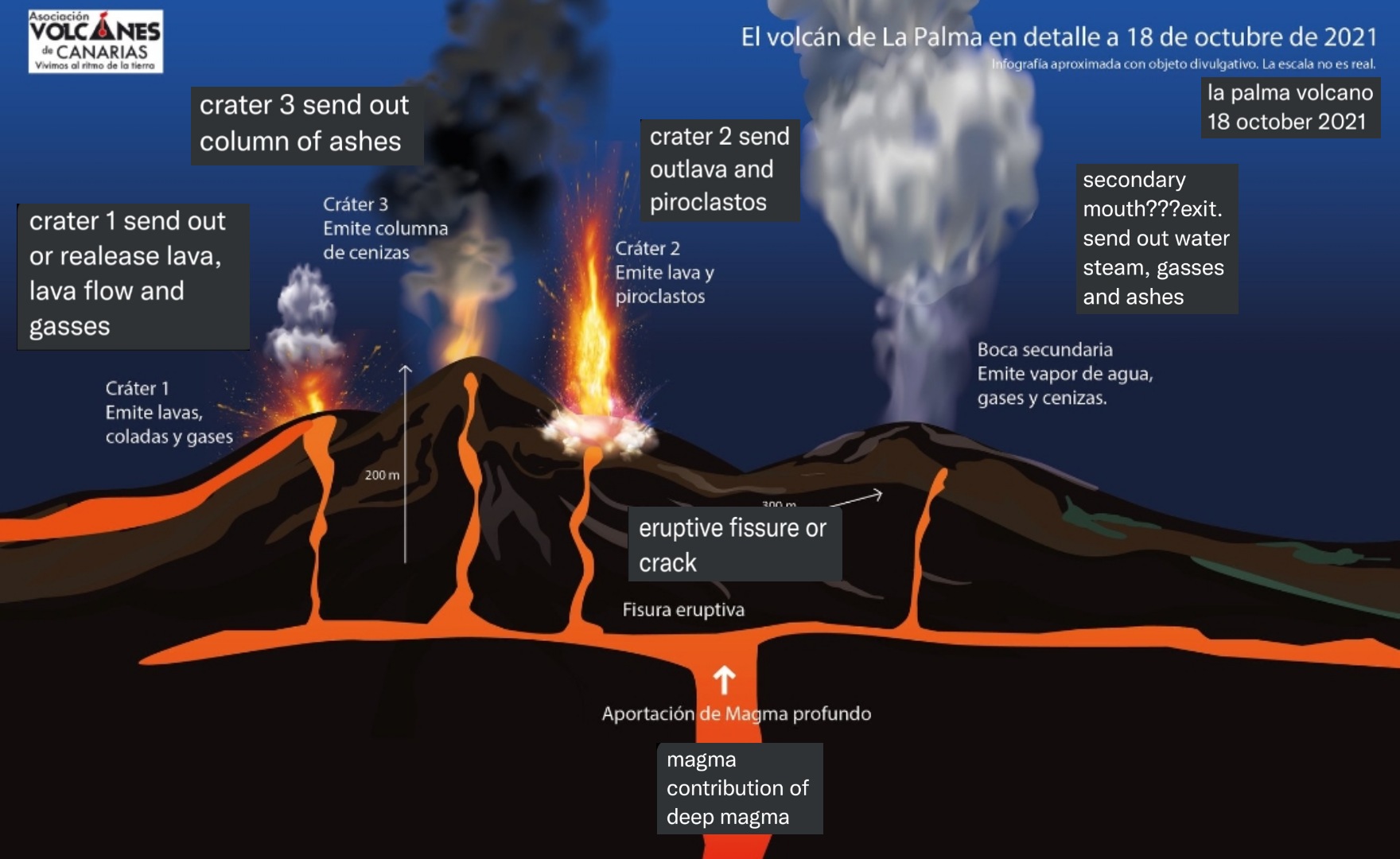O OVGA é um Centro de Ciência que desenvolve atividade de investigação aplicada e de divulgação científica na área da Vulcanologia, da Sismologia e da Geotermia.
Notícia -A A +A
Why activity is different at different vents in La Palma
Notícia OVGA 20-10-2021

Cartoon showing the different activity at the vents of La Palma at the moment (image: Volcanes de Canarias)
Volcanes de Canarias (link to twitter) published a simplified sketch to illustrate the current arrangements of vents at the eruption site, to help to better understand how the activity is different at each vent. Ultimately, this is a function of how gasses, present as bubbles inside the magma as well as still in solution in it, separate from the liquid magma column when it rises to the surface, and might form different regimes within the system:
For example, if gas bubbles form a type of conduit within the magma column, aggregating along a specific area, they likely will erupt as gas jets with little liquid and more ash, something typically observed at the upper vents. Areas at the margins of the main column might be largely degassed on the other hand; these will form liquid, but lower fountains or entirely effusive vents.
Another important factor includes how much external water (i.e. from the groundwater system) interacts with the magma. Depending on how much water is present and able to interact with the magma, this interaction can completely change the dynamics of the activity at some (or even all vents). Water can absorb a lot of energy, but if in contact with magma, it typically transforms into steam as result, which goes with a thousand (1000!) times increase of volume. If the generated steam is not easily released, it becomes over-pressured, and once, this pressure overcomes the surrounding containing pressure, will. result in violent explosions known as phreatomagmatic.
Phreatomagmatic activity is more likely to occur at the vents furthest away from the center, where magma rises through older rock layers that might still contain water or are in connection with aquifers.
Source: Volcano News, October 20th, 2021
